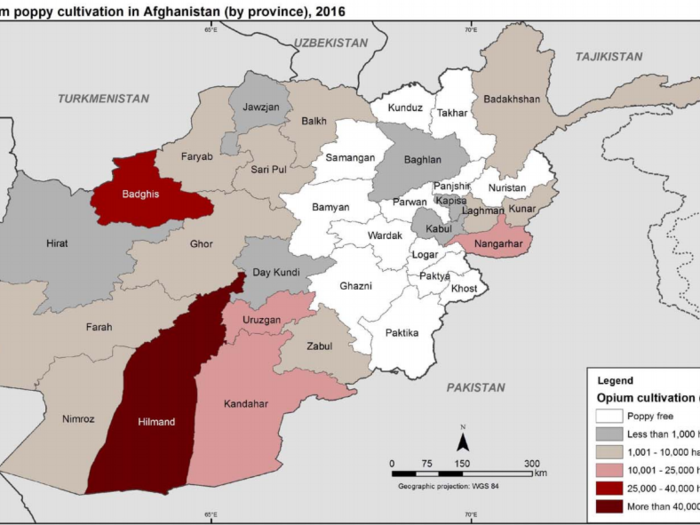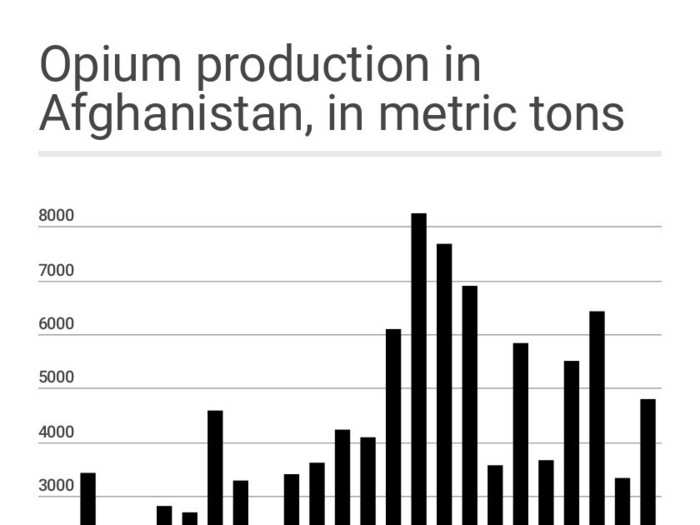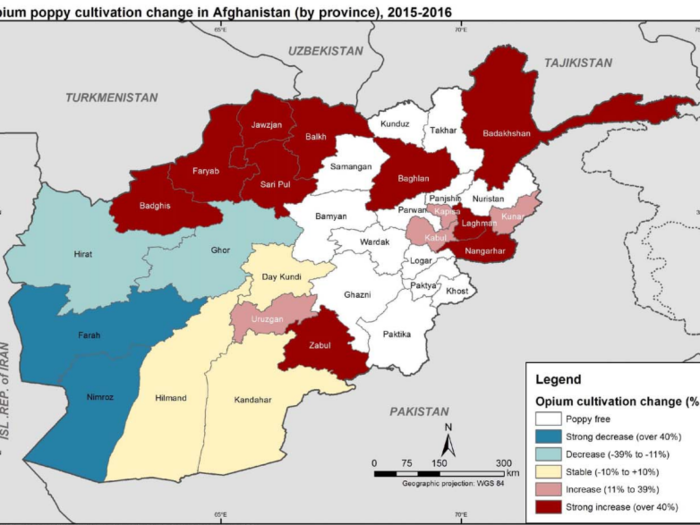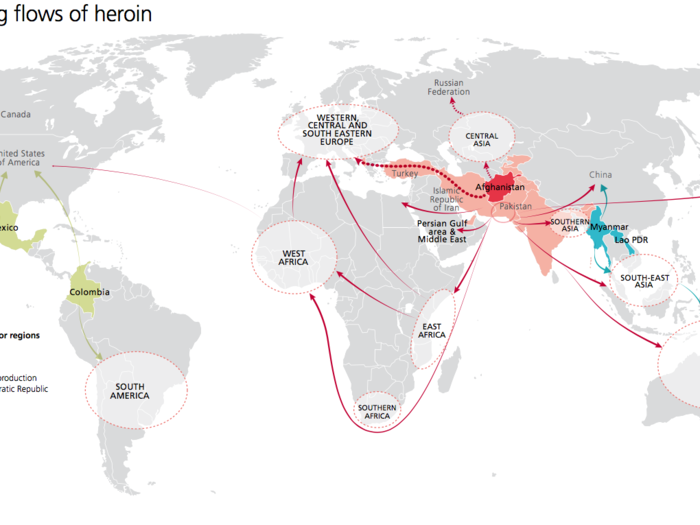- Home
- Military & Defense
- 15 years of war has done little stop production in the world's opium capital
15 years of war has done little stop production in the world's opium capital
2016's 201,000 hectares under cultivation was the third-highest amount recorded since 1994, only exceeded by the 224,000 hectares reported in 2014 and the 209,000 hectares registered in 2013.

Southern Afghanistan, Helmand (or Hilmand) province in particular, continues to be a locus for opium-poppy cultivation. That region had 59% of the country's total cultivation, while Helmand was home to 80,273 hectares.

Helmand is a longtime Taliban stronghold and one of the country's most restive provinces — in October, after weeks of fighting, a Taliban offensive on the provincial capital had cut the city off and led to hundreds of deaths.
The number of Afghanistan's 34 provinces that were free of opium poppies dropped from 14 last year to 13 this year, and every region except the southern one had an increase in opium production.

The Northern region saw a tremendous 324% increase, followed by the Northeastern at 55% and Eastern at 44%. Production in the Southern region was stable, declining 1%.
Opium production has fallen from levels seen during the late 2000s, but remains above the levels seen in the 1990s.

Opium yields also increased. The average was 30% higher in 2016 than in 2015, rising from 18.3 kilograms a hectare to 23.8 kilograms. Afghanistan's estimated potential opium production was up 43%, at 4,800 tons.
The Southern and Western regions drove that increase in opium, with their opium yields up 36% and 37%, respectively. The Southern region produced 54% of the country's opium, the most in Afghanistan and far ahead of the second-place Western region, which turned out 24%.
Opium-poppy production was stable in southern Afghanistan, but the country saw marked increases in its north and west.

The UNODC's estimations of opium yields were limited, as yield surveys could not be undertaken in all of the main cultivating provinces because of security issues.
The executive summary of the UNODC's 2016 opium survey points to the western province of Badghis as an example, saying that satellite imagery suggested that opium yield there may have been higher than other provinces in the region.
"As Badghis is the province with the second largest area under opium poppy cultivation in Afghanistan, this suggests that the national potential opium production in 2016 could be an underestimation," the report notes.
With the spike in opium production, Afghanistan remains a global supply hub, funneling opium and heroin to markets around the world.

Popular Right Now
Advertisement